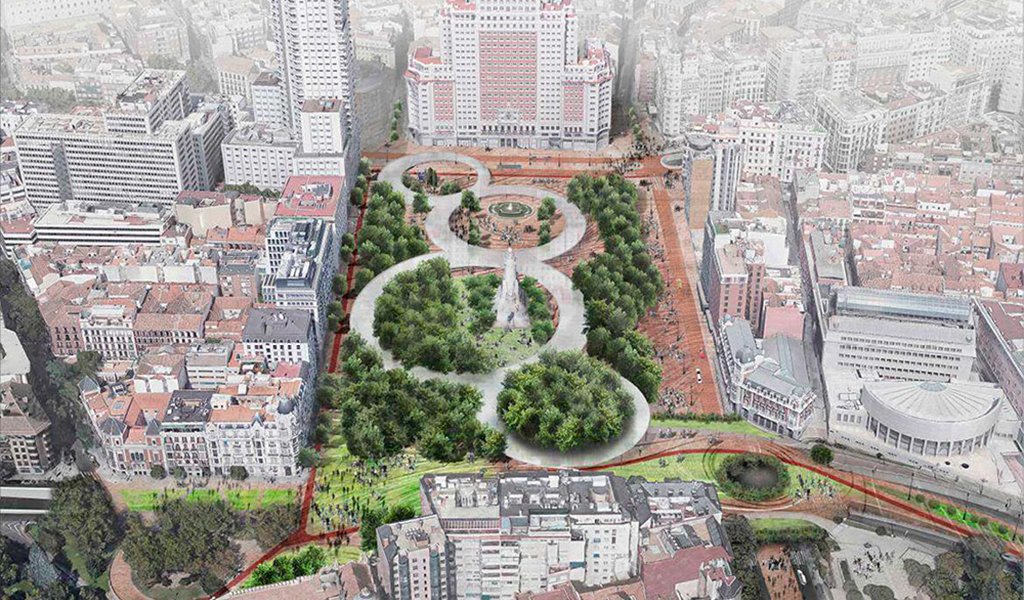
CO and NO2 detection, opacimeters, anemometers, weather station and cup and vane anemometers.
This remodeling project not only affects the Plaza de España, but covers up to 38 adjoining streets. It occupies an area of 90,000m2 reaching an approximate budget of 97 million euros.
The reform is divided into two areas: The first is the extension of the existing social life on Gran Vía near the Edificio de España, leaving a clear space to hold events. The second, a large park that connects the Parque del Oeste with the Sabatini Gardens, reaching the Casa de Campo. Traffic lanes are reduced with wide roads, sidewalks, green triangles, new trees, and three fountains lit by LED bulbs. Its underground public parking is also remodeled by changing its accesses. Ramps disappear to project a larger shopping arcade giving access to the Metro, as well as a large skylight outside.
For the reform of the tunnel that connects Ferraz with Bailén, 24 million euros of the 97 have been allocated. After the excavations, the proposal for the in situ conservation of the remains found in the Godoy Palace was presented, for this the construction system used in the mines called “Belgian” with umbrellas of horizontal micropiles in the area occupied by the finds. The rest of the construction is carried out under the open sky by the “cut and cover” system.
Complying with municipal urban regulations, Heritage of the Community of Madrid and the City Council, this tunnel has been equipped with opacimeters, anemometers, cup and vane anemometers and a weather station, distributed by Durán Electrónica, as well as the DURGAS system for the detection of CO and NO2, designed and manufactured by Durán Electrónica.
